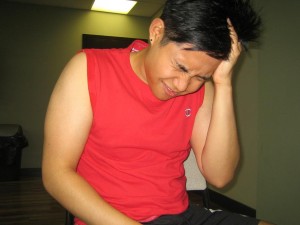A brain aneurysm is a dilation or protrusion in a brain artery. It usually forms in the arterial walls that are weakened or thin.
In cases where the aneurysm is small, there are no evident signs. The initial warning signs might arise once it grows bigger where it can crush on the nerves or if it seeps blood into the brain or ruptures.
Common initial warning signs of a brain aneurysm
Headache
In some cases of individuals with a brain aneurysm, headaches might arise days or weeks before its rupture.

If an aneurysm is leaking, it can cause warning headaches. Once it ruptures, a headache that can be described as the “worst” occurs. When an individual complains of an abrupt, intense headache, it might be an initial warning sign of a ruptured aneurysm. Remember that once it ruptures, it can be deadly in almost half of cases.
Visual issues
Double vision or a drooping eyelid are potential warning signs of a brain aneurysm that presses on a nerve or starting to seep blood.
The individual might suffer from discomfort behind or above one eye or a family member might notice dilation of the pupils. Other early signs include light sensitivity or blurry vision. Take note that these signs might come first before a rupture occurs in just minutes or even weeks.
Nausea and loss of consciousness
Nausea, stiff neck and vomiting are the signs of a growing or leaking aneurysm in the brain. The individual might lose consciousness for a short span of time, usually minutes or weeks before it ruptures.
The individual often appears confused or sleepy upon waking up and might fall into this state of confusion again in a few minutes or hours. Oftentimes, the individual lapses into coma or have a seizure.
Weakness or paralysis
Once a brain aneurysm ruptures, it can result to numbness, weakness or paralysis on one side of the face. In addition, paralysis might occur on one side of the body. If the individual is monitored, the breathing pattern frequently changes.
